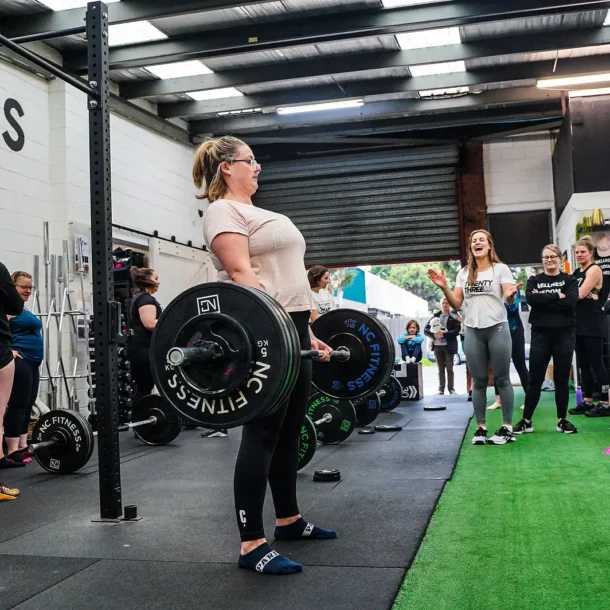

Even before falling pregnant myself, I have always been fascinated by the changes a woman’s body must go through to grow and birth a baby. I have literally poured in hours of professional development and reading to ensure I was well equipped to look after my expectant mothers.
Now I am in the hot seat myself, I continue to be surprised by the misconceptions about pregnancy and exercise which in fact leads many women to be overly caution and stop exercising or overly relaxed about post-pregnancy exercise and jumping back into intense exercise too quickly.
Often the only piece of commonly held advice is ‘to keep doing what you were doing before you got pregnant and avoid anything new’. But I wonder how helpful this advice really is? Does this rule apply equally to contact sports athletes? Strength training? Running? Yoga?
Benefits Of Exercise For Pregnant Women?
The list is literally endless in this department, but essentially staying active while pregnant will help to decrease risks of gestational diabetes, excessive weight gain, lower back pain, urinary incontinence, water retention and high blood pressure associated with pregnancy while improving mood and recovery postpartum.
When To Stop Exercise
Exercise while pregnant is a great way to check in with your body. Pain or discomfort during exercise can be due to a variety of factors from inappropriate exercise selection, to poor technique, but a healthcare professional should be consulted immediately if you experience any bleeding, painful contractions, amniotic fluid leakage, shortness of breath before exertion, dizziness, headaches, muscle weakness affecting balance or calf pain or swelling.
How Many Days Should I Strength Train?
One of the most common questions I am asked by my clients is ‘how is my training?’ Honestly my personal training has not changed too dramatically since pre-pregnancy. There were a few weeks in the first trimester where I trained for a maximum of 30 minutes and the overall workout put was low. But from week 12-13, I was back to following a structured program 5 times per week.
A pregnant women’s gym program is very much dependent on their training background, intensity and frequency pre-pregnancy. This is important because your training ‘level’ is based on how long you have been strength training consistently without a break of more than two weeks or so.
Beginner
If you are a beginner, it is likely you have just began training (less than 2 months) before falling pregnant. In these instances it is best to follow full body workouts 2-3 times per week with at least one day of rest between sessions.
Intermediate and Advanced
If you have been training between 2-12 months, at a frequency of 2-3 times per week you are likely to fit into the intermediate lifting camp. Advanced lifters are those who have been training for over a year, four or more times per week and a high level of movement skill and strength.
Both intermediate and advanced pregnant and postpartum clients could train upwards of 4-5 times per week, using either full or split routines. I prefer split upper/ lower body program due to the higher frequency of training, but if you are training 3 times per week you are better to train using full body programming.
What Types Of Exercises Should And Shouldn’t I do?
I like to think about training as preparation for labour and motherhood. On a daily basis, mothers lift babies and children, unpack strollers, carry them in car seats and more. A good training program helps to prepare for everyday activities that mimic everyday life like squatting, hinging, pushing and pulling (while keeping the spine supported. A balanced program should include both bilateral (dual limb) and unilateral (single limb) movements. However, keep in mind that as a progress through pregnancy, your centre of gravity will shift, therefore so will the risk of falling off balance.
This can be particularly problematic as pregnancy hormones will make ligaments and tendons more relaxed in preparation for birth, exposing you to injury. There is also consideration that should be paid around looking after your pelvic floor and modifying some positions for the health of mum and baby.
Which brings me to exercises you may be best to substitute out of any routine due to increased risk of injury. These include some unilateral movements or movements with a high balance component. Similarly, it is important to evaluate the importance of unilateral exercises (like lunges or step ups) if there is any pelvic pain present. From week 20, I could feel some changes already starting to happen with in my hips and adductors (inner thighs) and started to decrease wide lateral movement, especially those which are highly dynamic. The reason for being caution around inner thigh work is because your adductors attach to your pubic symphysis (your pubic bone). When someone is in the advanced stages of pregnancy, their ligaments and joints become more lax. Many pregnant women experience some groin pain as the pubic bone starts to separate. Working the inner thighs when the pubic symphysis is already unstable can cause increased inflammation in the pubic bone area.
Consideration should also be paid to high impact exercises like burpees, skipping, box jumps and running. Some runners have been seen to continue to run into their third trimester and seem to experience little consequence to the health of their pelvic floor. For me I moved away from running in the first trimester for the simple reason that my boobs hurt too much to be bouncing up and down. But going into my second and third trimester, I consider the notion of risk and reward. The pelvic floor undergoes a huge amount of stress in supporting a growing baby and for me personally I would prefer to leave out these exercises for a short period of time to protect the health of this important muscle.
Lastly, there it is common practise to start to avoid supine (back lying) position from 26 weeks. This is because many women may feel nauseous or dizzy lying in this position due to the baby sitting right on top of the main blood vessels as they exit the spine and cause less blood to pump through. This can not only make the mother feel dizzy, but can also be dangerous as less oxygen is passed to the baby. From a practical point of view, it also become ALOT harder to get up from being on your back as you get bigger. I like to apply some degree of common sense around this consideration though. After all, many pregnant women continue to fall asleep on their backs without adverse health outcomes and many women deliver on their backs too.
What About Core Training?
This is definitely an area of programming that attracts the most attention. Many traditional core exercises that encourage flexion of the spine are inappropriate past the first trimester. As the baby grows, the rectus abdominis must stretch and trying to tighten this muscle may increase the risk of diastasis recti (separation of the linea alba). However, some degree of separation during pregnancy is perfectly normal and with careful post party programming, a lot can be done to rehabilitate this area. I commonly use exercises that encourage anti-rotation and that keep the spine is good alignment. Exercises like modified frontal planks, side planks, falloff presses, modified wood chops, bird dog, dead bugs, four point exercises and kneeling or half kneeling exercises are favourites, but even these are modified slightly into the third trimester as the abdominal region gets bigger.
Intensity Of Load, Volume, And Range Of Movement
This is the area where there is the biggest change in my personal programming. As the pelvic floor continues to take more weight, the load (or amount of weight or level of resistance) will continue to decrease as I move into my final weeks of pregnancy. This is important to ensure that I am not bearing down on my pelvic floor, while also acknowledging that physiological changes are shifting my centre of gravity and affecting the amount of tension I can generate through my core. It is important to note your pre-pregnancy strength in these lifts. An advanced lifter who has a 1RM of 140kg on deadlifts (pre-pregnancy) will be moving different weights than someone who is has a 1RM of 60kg.
The volume of extra training session is very much dependent on your ability to recovery and current level of fatigue. In the first trimester, my volume dropped significantly as I spent most of the workout yawning through reps. Currently, at week 24 I am hitting 3-4 sets on most exercises. As I continue to get bigger, I will continue to check in and see how my body is both recovering and feeling.
Ensuring good range of motion is important. There is no reason why good range of motion should not be seen in most exercises. I will continue to hit parallel with my back squat (or reduce load if needed). This is to ensure I am not excessively loading up my back muscles with a poor depth squat. If range of motion becomes problematic, it is important to look to change the exercise itself to ensure all joint structures are being looked after.
Should I do Cardio or High Intensity Interval Training?
A good cardiovascular base is great for every person, not just those who are pregnant. Ideally, this should be moderate in intensity for those who are pregnant though, which would allow you to carry out a conversation without gasping. Walking and swimming are great forms of low intensity cardiovascular training.
High intensity Interval training (HIIT) can have its place during pregnancy but it is very individual. Once again, if you have done a lot of HIIT in the past you will be more accustomed to the higher rates of physiological work. Personally, I would avoid heavy HIIT sessions in the first trimester due to the naturally increased rate of miscarriage. Moving forward from this, I would recommend HIIT sessions to last between 5-20 mins, including bike, assault bike or sled pushes and include longer periods of recovery.
What About Rest and Recovery?
During pregnancy it might becomes more important to extend your rest period between heavier or intense sets. Sometimes this might 1- 3 minutes depending on the exercise. Post-training, care must also be taken to recover properly. Myofascial release on a foam roller, lots of sleep, good nutrition, rest smart techniques and periodic antenatal massage all play a role in helping keep the body moving well and ready for the next workout.
Summary
Exercise while pregnant does not follow a one size fits all approach. If you have been working with an exercise professional ensure that you a vocal in how you are feeling both during the workouts and after. Regardless of your training history, staying active during pregnancy is important to increase blood flow, decrease inflammation, decrease the risk of pregnancy related conditions and improve overall well being.
If you have any further questions about training while pregnant, do not hesitate to get in touch with Ange hello@23w.com.au.

Ange Drake is an personal trainer, women’s empowerment coach and fitness blogger in the northern suburbs of Melbourne. She is the director of one of the few womens’ only strength training gyms in Melbourne, 23W. Ange helps women to learn how to use strength based training, nutritional strategies and a positive mindset to transform their bodies, relationship with food and mind.
Can’t decide which of our packages is best suited for you? Take our questionnaire to help you decide!





